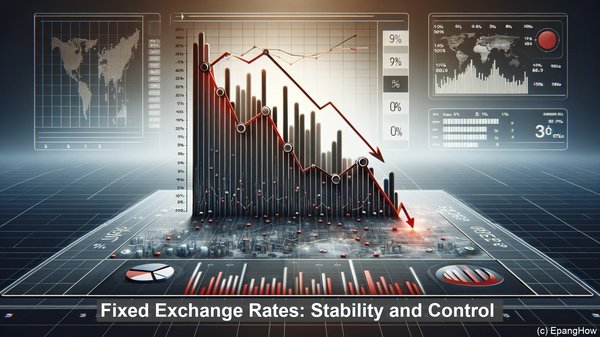Introduction: The Significance of Exchange Rates
Hello everyone, and welcome to our article on the difference between fixed exchange rates and flexible exchange rates. Before we delve into the details, let’s understand why exchange rates matter. Exchange rates determine the value of one currency in relation to another. They influence international trade, investment, and even tourism. In short, exchange rates are the backbone of global economic transactions.
Fixed Exchange Rates: Stability and Control
Fixed exchange rates, as the name suggests, are set and maintained by central banks or governments. Under this system, the value of a currency is pegged to a specific benchmark, such as gold or another currency. The main advantage of fixed exchange rates is stability. They provide certainty for businesses and investors, as the rates remain relatively constant. Additionally, fixed rates can help control inflation and maintain price levels. However, the downside is that they may not always reflect the true market value of a currency, leading to potential imbalances.

Flexible Exchange Rates: Market Forces at Play
In contrast to fixed rates, flexible exchange rates are determined by market forces, specifically supply and demand. Here, the currency’s value is not fixed but fluctuates based on various factors, including economic conditions, interest rates, and investor sentiment. The primary advantage of flexible rates is their ability to self-adjust. If a country’s economy is struggling, its currency may depreciate, making its exports more competitive. On the flip side, a strong economy may lead to currency appreciation. However, this volatility can also pose challenges, especially for businesses engaged in international trade.

Factors Influencing Exchange Rates
Exchange rates, whether fixed or flexible, are influenced by a multitude of factors. Economic indicators, such as GDP growth, inflation rates, and employment data, can significantly impact a currency’s value. Political stability, trade policies, and even natural disasters can also play a role. In the case of fixed rates, central banks often intervene in the market to maintain the desired exchange rate. In contrast, with flexible rates, the market largely determines the value, with minimal intervention from authorities.
The Debate: Pros and Cons
The choice between fixed and flexible exchange rates has long been a subject of debate among economists. Advocates of fixed rates argue for stability and predictability, which can be particularly beneficial for countries with smaller economies. On the other hand, proponents of flexible rates highlight the importance of market forces and the ability to adjust to changing economic conditions. Ultimately, the choice depends on a country’s specific circumstances and policy goals.
